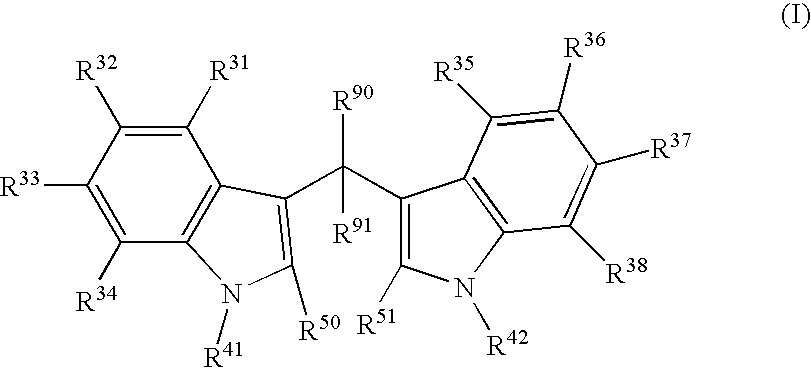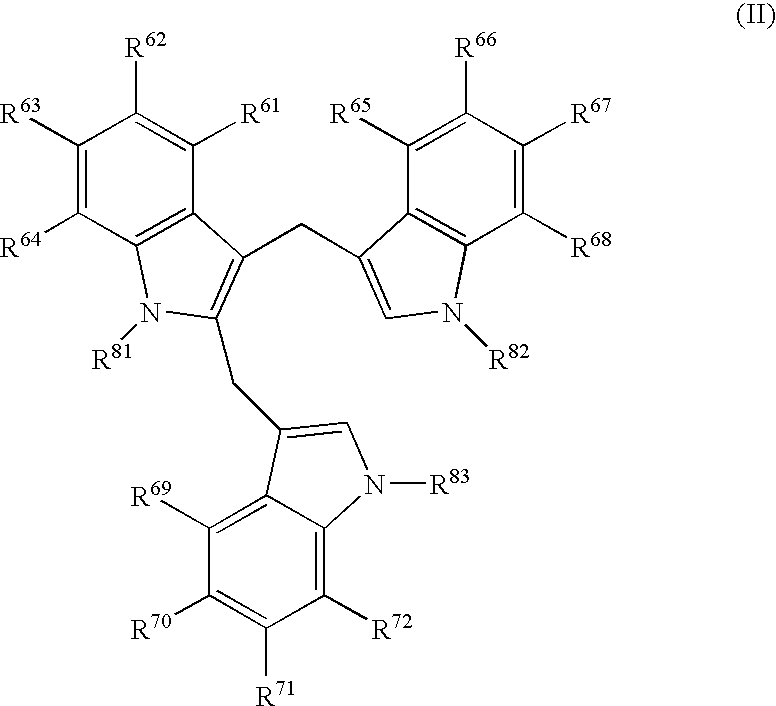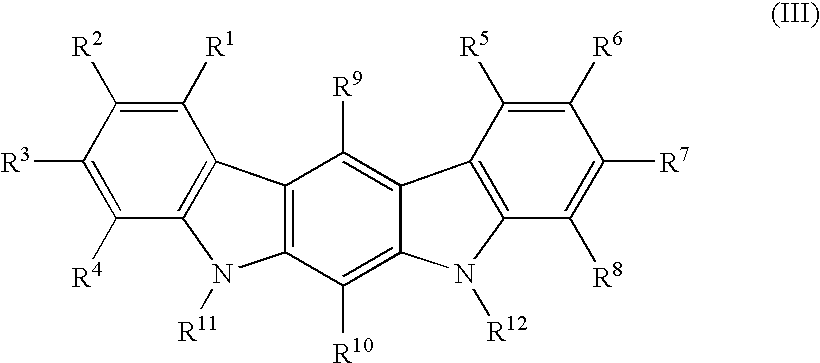Anti-parasitic methods and compositions utilizing diindolylmethane-related indoles
a diindolylmethane and antiparasitic technology, applied in the field of methods and compositions for the treatment and prevention of parasitic infections, can solve the problems of ineffective protozoal infection activity of compounds with antibacterial or antiviral activity, atypical and unexpected activity of compounds against protozoal parasites, and no preventive or therapeutic vaccines are yet available for these parasitic diseases. , to achieve the effect of reducing the number of blood, tissue or intestinal
- Summary
- Abstract
- Description
- Claims
- Application Information
AI Technical Summary
Benefits of technology
Problems solved by technology
Method used
Image
Examples
example 1
5.1 Example 1
Manufacture of Processed DIM for Enhanced Oral Bioavailability
[0206]Preparation of Processed Diindolylmethane is Accomplished According to the steps outlined in U.S. Pat. No. 6,086,915, herein incorporated by reference in its entirety. Briefly, this included mixture of about 10-40% by final weight of Diindolylmethane with about 10-40% by final weight of vitamin E polyethylene glycol 1000 succinate (Vitamin-E-TPGS, Eastman Chemical), 2-20% by final weight, phosphatidyl choline (Phospholipon 50G, Rhone Poulenc) and 15-30% by final weight hexanol. This mixture is made homogeneous by mixing. The homogeneous mixture of indoles and other oil soluble substituents listed above is added to a solution of modified starch in water (Capsul Starch from National Starch, Inc.). The starch component forms from 30-70% of the final dry weight of the product. The well dispersed final combined mixture is then subjected to spray drying. The resultant product is a fine powder containing Diind...
example 2
5.2 Example 2
Manufacture of Capsules Containing Diindolylmethane and Optional Antiprotozoal Agent(s)
[0207]Capsules containing 150-300 mg of processed Diindolylmethane, as produced according to the steps described in example 6.1, are made by mixing the processed Diindolylmethane with microcrystalline cellulose and placing the mixed powder into opaque gelatin capsules.
[0208]Capsules containing the combination of about 150 mg of processed DIM (providing 50 mg of DIM) and 200-500 mg of Artemisinin, and / or other Artemisinin derivatives are made by mixing the processed DIM, and Artemisinin with microcrystalline cellulose or rice flour excipient and placing the mixed powder into opaque gelatin capsules. Alternatively, capsules or tablets with about 150 mg of processed DIM providing 50 mg of DIM and 200-500 mg of Artemisinin, or other Artemisinin derivatives, Curcumin 100-200 mg, and piperine 20 mg are made with microcrystalline cellulose or rice flour excipient and by placing the mixed pow...
example 3
5.3 Example 3
Manufacture of Flavored, Pediatric Suspensions of DIM-Related Indoles
[0209]DIM-related indoles are incorporated into pediatric suspensions manufacture as powdered mixtures to be re-constituted with water prior to use in patients. The suspension products have the advantages of long shelf life, stability and flavoring for taste masking to improve palatability.
[0210]A DIM-related indole containing suspension is made using established manufacturing techniques as described in U.S. Pat. No. 6,586,012 by Yu et al. issued Jul. 1, 2003, and titled, “Taste masked pharmaceutical liquid formulations”. When reconstituted, the pediatric suspension has a DIM related indole concentration of 15-30 mg / ml of suspension. Typically, 3-10 mg / kg / dose of DIM related indole is administered twice daily. Alternatively, DIM-related indole pediatric suspensions are manufactured using techniques described by Kulkarni et al. in U.S. Patent application No. 20050136114, published June 23, 200, and titl...
PUM
| Property | Measurement | Unit |
|---|---|---|
| time | aaaaa | aaaaa |
| time | aaaaa | aaaaa |
| time | aaaaa | aaaaa |
Abstract
Description
Claims
Application Information
 Login to View More
Login to View More - R&D
- Intellectual Property
- Life Sciences
- Materials
- Tech Scout
- Unparalleled Data Quality
- Higher Quality Content
- 60% Fewer Hallucinations
Browse by: Latest US Patents, China's latest patents, Technical Efficacy Thesaurus, Application Domain, Technology Topic, Popular Technical Reports.
© 2025 PatSnap. All rights reserved.Legal|Privacy policy|Modern Slavery Act Transparency Statement|Sitemap|About US| Contact US: help@patsnap.com



